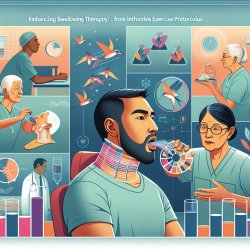Introduction
The recent COVID-19 pandemic has highlighted significant gaps in global public health (GPH) systems, particularly in data management and decision-making processes. The research article "Global Public Health Database Support to Population-Based Management of Pandemics and Global Public Health Crises, Part I: The Concept" explores these challenges and proposes a data-driven approach to improve outcomes during health crises. This blog post will discuss how practitioners, especially those involved in online therapy services like TinyEYE, can enhance their skills and services by integrating these research findings.
Understanding the Research
The research identifies deficits in GPH information systems that became evident during the COVID-19 pandemic. It emphasizes the need for a multidisciplinary model supported by a robust GPH database to manage pandemics effectively. Key recommendations include improving data literacy, adopting evidence-based decision-making (EBDM), and implementing population-based management (PBM) strategies.
Data Literacy: A Cornerstone for Effective Management
Data literacy is crucial for interpreting and utilizing information to make informed decisions. For speech-language pathologists and other practitioners, enhancing data literacy can lead to better outcomes by enabling them to:
- Identify and address specific client needs based on data analysis.
- Utilize statistics and indicators to evaluate therapy effectiveness.
- Visualize information to support evidence-based interventions.
By fostering data literacy, practitioners can improve their ability to make informed decisions that positively impact client outcomes.
Implementing Evidence-Based Decision Making
EBDM involves using the best available research, contextual, and experiential evidence to guide decisions. For online therapy providers like TinyEYE, this means:
- Conducting validated needs assessments to tailor interventions to individual clients.
- Sharing information with clients and stakeholders to clarify what works and what doesn't.
- Mobilizing resources effectively by understanding the urgency of client needs.
By integrating EBDM into practice, therapists can ensure their interventions are grounded in solid evidence, leading to better client outcomes.
Population-Based Management: A Strategic Approach
PBM focuses on managing health crises by considering the needs of entire populations rather than individuals. This approach can be applied to online therapy by:
- Developing comprehensive intervention plans that address the needs of diverse client groups.
- Utilizing data to identify trends and patterns that inform therapy strategies.
- Collaborating with other health professionals to ensure a coordinated response to client needs.
By adopting a PBM approach, practitioners can enhance their ability to manage client needs effectively during health crises.
Encouraging Further Research and Collaboration
To improve outcomes for children and other vulnerable populations, practitioners should engage in ongoing research and collaboration. By staying informed about the latest developments in GPH and integrating new findings into practice, therapists can continuously enhance their skills and services.
To read the original research paper, please follow this link: Global Public Health Database Support to Population-Based Management of Pandemics and Global Public Health Crises, Part I: The Concept.










